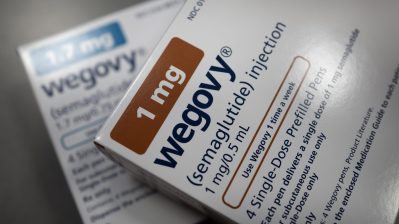Manufactured luxury by the numbers:
• 5,500 miles per trip from Fiji to Los Angeles (the closest Fiji Water destination point in the US)
• 46 million gallons of fossil fuel
• 1.3 billion gallons of water
• 216,000,000 lbs of greenhouse gases
… and that’s in just one year. Oh, then there’s the chemical cocktail we call PET plastic with a 12% recycling rate in the US. You know, that substance that never breaks down and is found in little pellets worldwide, covering a continent-sized sheet in the Pacific Ocean.
This is the face of Fiji Water. Rob Walker recently reported about Fiji’s new commitment to sustainability explained on fijigreen.com whose sexy byline is “Every Drop is Green.” Like other difficult nuanced discussions such as Wal-Mart’s greening through energy, employee programs and dramatic supply chain refinements, this to me is another lipstick on a pig story.
Fiji is a very successful business model. They experienced a 40% sales increase in 2007 and expect the same this year. Fiji is a distance from Seattle, almost 6,000 miles in fact. The company benefits from the South Pacific Convergence Zone which dumps over 3,000 mm of rain a year into a pristine aquifer, gifting the exotic, silica-y water consumed by millions of marketing receptive Americans (one of Fiji’s marketers claimed unsubstantiated health benefits from silica).
But here is where the problem starts. Fiji is using staggering amounts of energy, water, and fossil fuels to take a naturally occurring product (which is not regulated like drinking water here in the US), put it in an inherently problematic container and then have that forever-container tossed into landfills or incinerators all over America (and Asia, where we have a healthy export market for plastics).
Even if we set aside a moment the drawing down of a pristine aquifer (yes, recharged by a lot of rain), the green house gas emissions, the use of an available fuel source to make plastic, the unavailability of plastic recycling infrastructure through the US, and the incredibly dirty bunker fuel used in ocean freighters in what the company describes as “carbon efficient transportation,” there’s the chemical issue.
Plastic water bottles are made of PET, which is an acronym for polyethylene terephthalate. It would be alright if used once but many people refill the bottles time and time again, releasing the chemical DEHA which is a known carcinogen. Other competing plastic bottles are emerging as bad boys as well, including the camper’s beloved Nalgene which now offers a BPA-free bottle. Bisphenol A (BPA), a reproductive toxin which has shown to have adverse effects on women and developing fetuses at surprisingly low levels, is used in water bottles and tin cans.
Virtually every problem associated with bottled water would be alleviated if each of us could manage to make one, $15-$17 investment in a new generation of sexy, green bottles: Sigg and Klean Kanteen to name a few. Away with climate change, toxics, depleted water, dirty bunker fuel and yet another highly successful campaign based on want. The same very successful marketing strategies have been used to sell you antibacterial products and SUVs and the joke is not only on you, but on all of us planetary citizens.
There’s a lot happening in the world. Through it all, Marketplace is here for you.
You rely on Marketplace to break down the world’s events and tell you how it affects you in a fact-based, approachable way. We rely on your financial support to keep making that possible.
Your donation today powers the independent journalism that you rely on. For just $5/month, you can help sustain Marketplace so we can keep reporting on the things that matter to you.


















